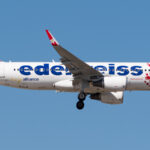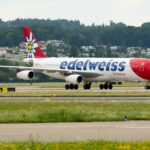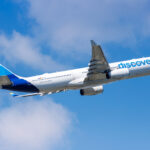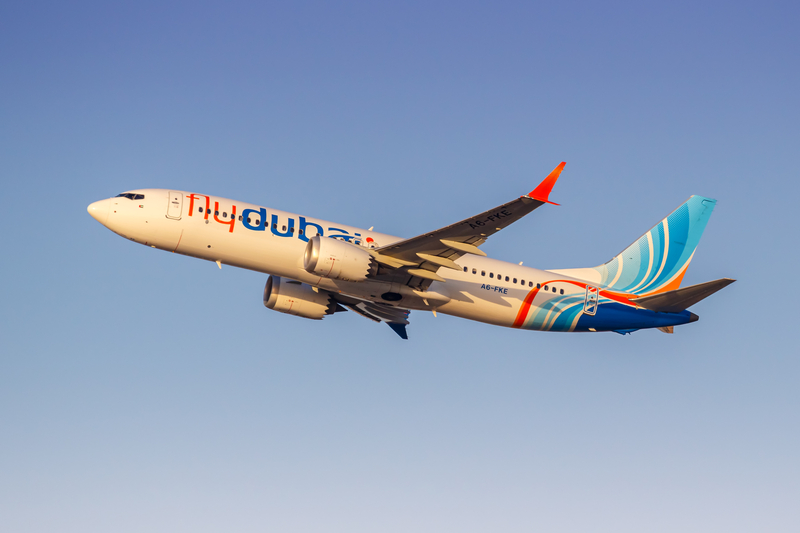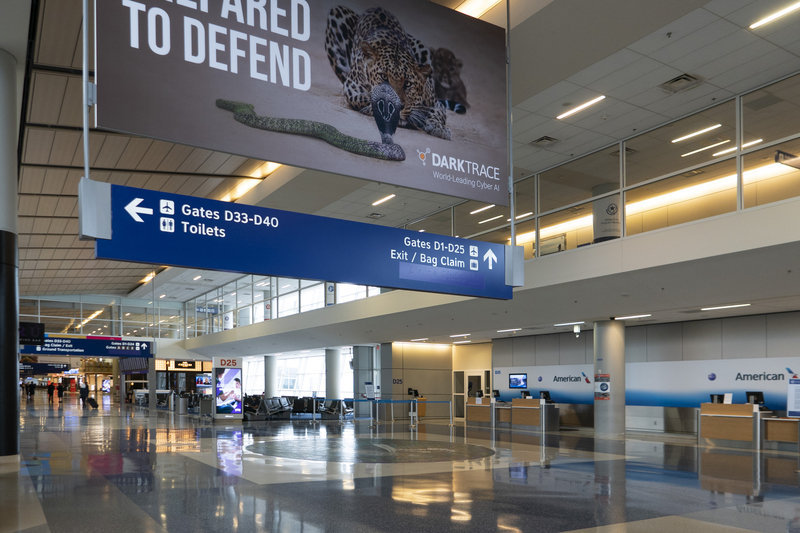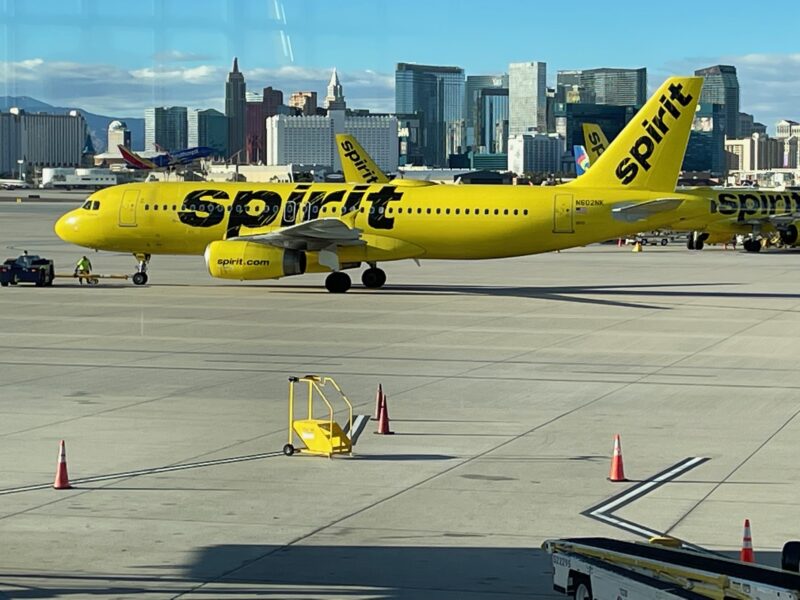Edelweiss Begins A340 Swan Song: First of Five Quadjets Heads to Long-Term Storage
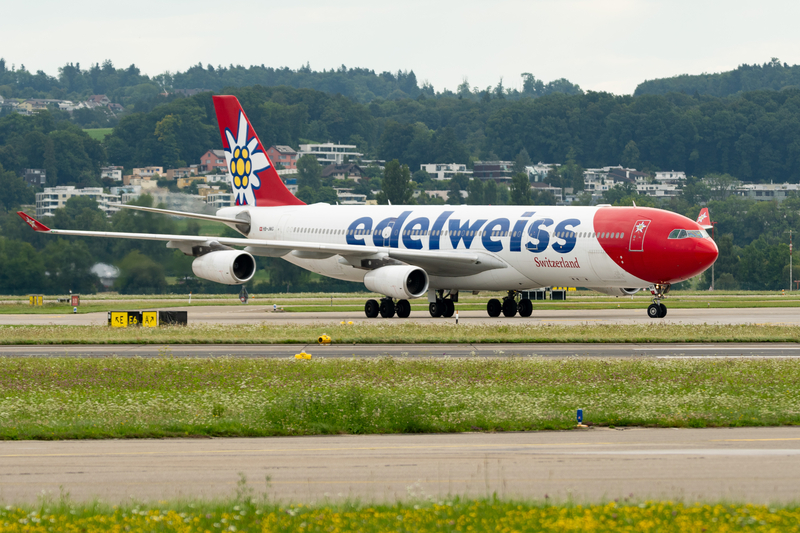
ID 401694226 | Air © Robert Buchel | Dreamstime.com
Edelweiss Air has taken the first formal step in retiring its Airbus A340 fleet. On October 13, the Swiss leisure carrier ferried A340-300 HB-JMG from Zürich to Spain’s Teruel Airport—a dry-aircraft storage and maintenance hub—marking the beginning of the end for a type that has underpinned Edelweiss’s long-haul growth for nearly a decade.
A farewell flight bookending a long career
HB-JMG, almost 22 years old, spent its first 13 years flying for SWISS before joining Edelweiss in 2016. Its final revenue trip encapsulated what the A340 did best for the airline: dependable, long oceanic sectors to sun destinations. Earlier this month the aircraft operated ZRH–SEZ–MRU and back, then completed its ZRH–TEV ferry as WK5134, with a brief wing-wave on arrival—an understated goodbye to a workhorse that:
-
Circled the globe ~900 times
-
Flew ~36 million kilometers
-
Logged ~43,000 flight hours
Those tallies, shared by the airline, reflect the A340’s central role on Edelweiss routes to the Indian Ocean, the Americas, and seasonal Africa services.
Why now? Fleet strategy, economics, and emissions
Like many carriers, Edelweiss is pivoting from four engines to two. The A340’s reliability is renowned, but fuel burn, emissions, and maintenance economics favor new-generation twinjets. Edelweiss is replacing its five A340-300s with six Airbus A350-900s, three of which have already arrived, with three more due by the end of 2026.
That upgauge—five A340s out, six A350s in—gives Edelweiss more seats, lower fuel per passenger, and greater range/payload flexibility at hot-and-high or long-stage destinations. It also dovetails with Switzerland’s and the Lufthansa Group’s broader sustainability targets as the A340 era winds down across Europe.
What changes for travelers
Edelweiss’s A350-900s are configured for up to 339 seats in two cabins (about 30 fully flat business-class beds in a 2-2-2 layout and 309 economy seats in 3-3-3, including Economy Max extra-legroom rows). That’s a notable capacity lift over the A340-300’s 27 business / 287 economy. For leisure markets with strong peak demand—think school holidays and winter-sun seasons—those extra seats help constrain fares and improve availability without compromising comfort.
Cabin experience also improves: the A350’s quieter cabin, higher humidity, lower cabin-altitude pressurization, and larger bins make long sectors less fatiguing. Operationally, better fuel burn and modern avionics give Edelweiss more resilience when winds, weather, or payload restrictions would have pinched the A340.
Why Teruel?
Teruel (TEV), in Spain’s Aragon region, has become one of Europe’s go-to long-term storage airfields. Its dry climate slows corrosion, and the on-site MRO ecosystem supports anything from short storage to full teardowns. Not every aircraft that goes to Teruel is scrapped; some are reactivated or parted out to keep sister ships flying. Edelweiss hasn’t publicly disclosed HB-JMG’s ultimate fate, only that the A340 retirement program has begun.
What’s left in the A340 fleet—and what’s next
With HB-JMG in storage, four Edelweiss A340-300s remain active for now. Expect a staggered draw-down: the A350 fleet will progressively assume high-demand long-haul routes (and some shoulder-season missions) as additional frames and crews come online. Zurich’s long-haul map—Caribbean, Indian Ocean, North America, and selective Africa leisure points—should largely be maintained, with single-type simplification helping scheduling and maintenance.
Key near-term watch-items:
-
Route swaps: Look for stepwise A350 substitutions on long Indian Ocean and North Atlantic rotations where the performance and capacity gains are most valuable.
-
Peak season deployment: Extra A350 gauge may support denser peak patterns (e.g., additional weekend frequencies) without leasing in capacity.
-
Interchange with SWISS: As part of Lufthansa Group, fleet and MRO synergies can accelerate the transition; training pipelines are often the pacing item.
The broader A340 picture
Edelweiss is hardly alone. The A340—particularly the -300—has been resilient thanks to low ownership costs and generous range; plenty of carriers leaned on it during post-pandemic capacity crunches. But as A350s and 787s arrive and engine shop capacity normalizes, the quadjet’s commercial niche keeps shrinking. A handful of operators will keep them for a while longer on specific missions, but fleet planners are converging on the same answer: twins win.
A respectful exit for a loyal type
If you’ve flown Edelweiss’s A340s, you’ll remember the type’s calm, unhurried takeoff roll and the airline’s friendly, holiday-minded service. HB-JMG’s retirement doesn’t dim that legacy; it bookends it. The A350 era promises a quieter, greener, and roomier ride—important upgrades for 10- to 12-hour leisure flights that define Edelweiss’s purpose.
Bottom Line
Edelweiss has formally started phasing out its A340-300s, ferrying the first frame, HB-JMG, to long-term storage in Teruel. The replacement A350-900s bring more seats, better economics, and improved passenger comfort. Expect a measured transition over the next 18–24 months, with the A350 becoming the backbone of Edelweiss’s long-haul network as the A340 bows out with grace.
